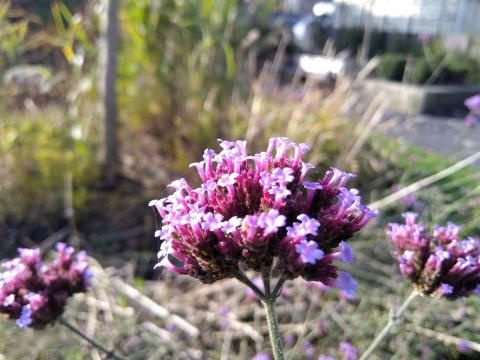Verbena

This verbena bonariensis I observed growing in a public garden in my home town. It’s an attractive plant, made all the more so by its autumnal flowering, offering colour when much else is brown and decaying. The genus was well known to the Egyptians and Greeks who called it the Tears of Isis and Tears of Hera, respectively. The Roman writer Pliny associated it with the altars of Jupiter, for which it was used to sweep clean and purify. It is sad that so pretty a plant should have been used in the worship and commemoration of such ugly personifications of deceit. Isis and Hera never existed, so for none did they cry. Jupiter, if he were real, was a perverted and violent bully, whose cleansing would require far more than a pretty herb.
In Luke 19, we read of the tears of Christ:
Now as He drew near, He saw the city and wept over it, saying, “If you had known, even you, especially in this your day, the things that make for your peace! But now they are hidden from your eyes. For days will come upon you when your enemies will build an embankment around you, surround you and close you in on every side, and level you, and your children within you, to the ground; and they will not leave in you one stone upon another, because you did not know the time of your visitation.” (NKJV)
Christ wept for the Jewish nation because it failed to recognise the Holy One in its midst and the incredible sacrifice about to be offered. Furthermore, He foresaw the Roman battering rams and siege equipment which would tear down the city’s walls, prior to killing all within. Here, the real God shed tears for those He loved, offering a costly cleansing and purification, not with dainty flowers, but his own life-blood. The tears of Christ, His sweat drops, His blood, all flowed that filthy prodigals might be brought home, cleansed, transformed and ennobled. Verbena is pretty enough, but Christ’s love for sinners is truly beautiful.
- Log in to post comments


 Sunday Worship 10.45am & 6.00pm
Sunday Worship 10.45am & 6.00pm